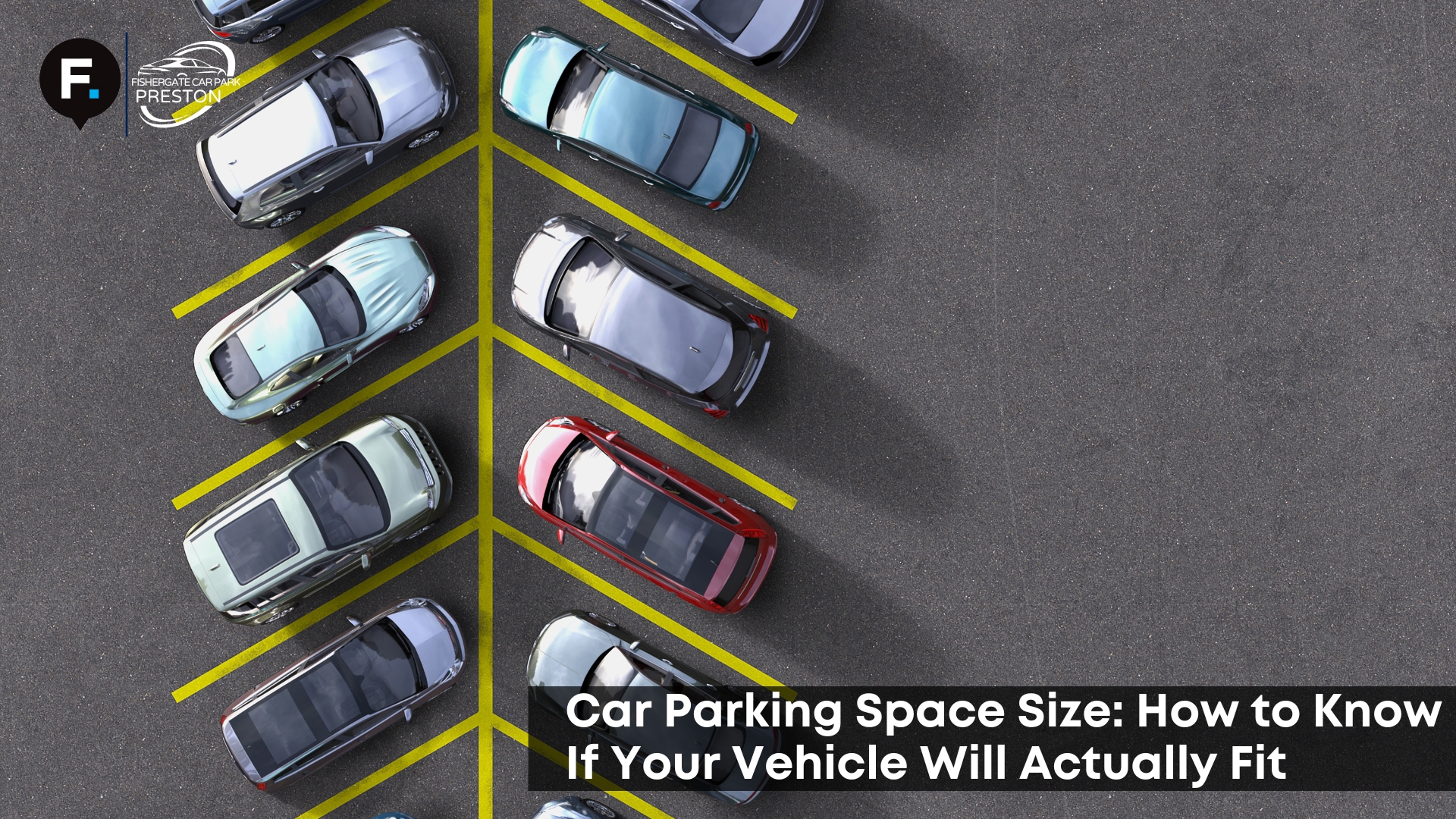Car Parking Space Size: How to Know If Your Vehicle Will Actually Fit
Have you ever pulled into a tight space and wondered if your car would even fit? Parking troubles are more common than most drivers admit, and squeezing into a bay that’s just too small can quickly ruin your day. At Fishergate Car Park Preston, we understand the importance of matching your car with the right space before switching off the engine. Knowing the exact size of the car parking space helps you avoid bumps, fines, and unnecessary stress. If you want to park smarter, it starts with understanding what size means in today’s busy car parks.
What Is the Standard Car Parking Space Size in the UK?
The standard car parking space size in the UK is typically 2.4 metres wide and 4.8 metres long. This measurement is used across most public and private car parks, providing enough room for an average car to park safely and open its doors without issue. However, not all vehicles fit this average – some are longer, wider, or bulkier due to design and features. If you drive a larger model or often park in busy areas, understanding how the standard size of a car parking space affects your experience can help you avoid unnecessary stress. This becomes more noticeable with bigger vehicles.
How Wide Does a Parking Space Need to Be for Larger Cars or SUVs?
For larger cars or SUVs, a parking space should ideally be at least 2.6 metres wide to allow safe access and prevent door dings or awkward exits. While the length may remain close to standard, the added width makes all the difference when it comes to comfort and safety. Modern cars are becoming larger, which means the average car parking space size does not always reflect today’s vehicle needs. When parking in narrow bays, extra caution is required, especially if neighbouring spaces are already full. With this in mind, it’s essential to consider various needs, such as electric vehicle charging zones.
Do Electric Vehicles and Charging Bays Require More Room?
Yes, electric vehicle bays often need more space due to the additional access for charging cables and equipment. These bays might be slightly wider and better lit to ensure visibility when plugging in. As EV ownership increases across the UK, car parks must adjust their parking space sizes to meet growing demand. These bays are also conveniently positioned near entrances. This illustrates how various vehicles and features affect spacing requirements, which differ between public and private parking areas.
Is There a Difference Between Public and Private Parking Space Sizes?
Yes, public car parks tend to stick to consistent regulations, while private parking spaces for rent can vary significantly in size. In private settings, such as residential developments or driveways, dimensions may be influenced by the available land, design, or local authority requirements. At Fishergate Car Park, Preston, all our bays follow national guidelines to ensure consistency and accessibility. However, if you’re renting or purchasing a parking space, checking the exact measurements before committing is always a smart move. For guidance on standards and oversight, UK car park management services can offer useful insights. But what about quickly judging a space when you’re already on the move?
How Can You Tell If a Car Park Space Is Too Small Before You Park?
To decide if a bay is too small, compare your car’s width and length against the bay’s visible lines. If the clearance is tight, you might risk crossing the lines or scraping adjacent vehicles. Mirrors can help judge distance from kerbs or markings, and parking sensors can give real-time alerts. Having a mental reference of your vehicle size is helpful when exploring busy car parks. Familiarising yourself with the width of a standard parking space gives you a benchmark, but what happens when you don’t fit inside the lines?
What Happens If You Park Over the Lines in a Tight Space?
Parking over the lines may result in fines, complaints, or having your vehicle blocked in by other frustrated drivers. Many car parks impose penalties for occupying more than one bay or creating obstructions. It can also limit the flow of vehicles and reduce availability for others. Staying within the lines of the car parking space shows consideration and reduces the risk of damage or disputes. Fortunately, some spaces are designed to be more forgiving, particularly those reserved for specific user groups. If you’re looking for a stress-free option, Easy parking in Preston can make a big difference.
Are Disabled and Parent Bays Bigger Than Regular Spaces?
Yes, disabled and parent-and-child parking bays are usually wider and longer to allow for wheelchair ramps, pushchairs, and safe loading. These spaces often measure up to 3.6 metres wide and are marked with signs or paint. The extra room supports safe movement around the vehicle, especially when doors need to be fully opened. It’s essential to respect these areas and use them only when authorised to do so. The extra width and accessibility highlight how the layout and orientation of spaces also matter.
Does the Angle of Parking Affect How Much Space You Have?
Yes, angled bays offer better turning angles and easier entry, which often means more usable space even in tighter environments. They reduce the need for complex manoeuvres and are commonly seen in smaller car parks to make the most of available land. However, angled bays can also create confusion if not well-marked, especially for larger vehicles. Understanding how these layouts work gives you a better chance of avoiding misjudgment. This brings us to the challenges in older facilities.
Should You Avoid Older Car Parks With Narrower Bays?
Yes, many older car parks were designed when vehicles were smaller, and they often have tighter car parking dimensions in feet. These spaces may not comfortably accommodate today’s SUVs or larger saloons, increasing the risk of door scrapes or rear-end collisions. You can find this at a location designed to meet the needs of modern drivers, featuring wider parking spaces and improved signage to facilitate easy access. Still, having a reliable way to check fit before parking is your best guarantee.
What’s the Easiest Way to Know Your Car Will Fit Every Time?
The easiest way to determine if your vehicle fits is to measure its exact dimensions and compare them to the published parking space sizes. Keep your car’s width (with mirrors), length, and turning circle in mind when choosing a parking spot. Some car park apps and websites even list bay dimensions in advance. Being informed gives you more control over where and how you park, whether it’s for a quick shop or a long stay. With the right knowledge, stress-free parking becomes a habit.


Leave a Reply